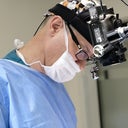Will your nose ever look like the day the cast came off? The question you ask is a very good one with a fairly complicated answer. The cast holds down a lot of the swelling, so that if the cast is still on tight when it is removed, there is a glimpse at the nose without significant swelling. At this point the tip usually looks well defined, and stands up and out distinctly. However several changes occur. In the early weeks after rhinoplasty swelling builds up particularly in the area of the tip and the airy above the tip called the supratip. Swelling is fluid that accumulates in traumatized tissue as water in a sponge. after about a month or so a layer of scar issue also builds up under the skin. it is most prominent in the area of the supratip. There are yet other changes. After surgery the tip drops to some extent, more in some patients less in others. The tip also loses some of its forward projection, More in some, less in others. The combination of the dropping of the tip, the reduction in the forward projection, and the buildup of scar tissue in the area above the tip can create a convexity of the lower half of the nose in profile along with a somewhat wide look in the front view. The convex shape in profile is often referred to as a “Polly beak“. If the prominence is mostly due to scar tissue it can be treated by injection of steroid. This is most commonly the case. fortunately the steroid works quite well for this. But in some cases the reduction of tip projection results in the convex prominence of the supratip area being Cartilage and not just scar issue. Surgeons wrestle with this problem all the time. In some cases we try to add support to the Columella/ tip complex to prevent the loss of projection and maintain that upward an outward look of the tip that you saw when the cast was first removed. In some cases we resect a little extra Cartilage along the dorsum in the area of the supratip to preserve that definition between the bridge and tip and avoid the convexity or “Polly beak“ appearance. However, if too much is resected in a nose which has fairly good tip support, the result could be the opposite of a poly beak which is a “Pinocchio tip“. Ultimately there are tips which have significant independence support, in which case, what you are experiencing does not occur . There are others who have poor independent tip support in which case reduction of projection will occur postoperatively and result in a “polybeak “. how much support should be added at the time of surgery, how much over resection of the area above the tip should be performed, and how much reduction in tip rotation and projection will occur postoperatively are judgment calls that will vary from one patient to the next. And that is only a skeleton description of the problem which challenges most surgeons on each and every rhinoplasty, and is why rhinoplasty is considered the most difficult operation in plastic surgery, and why it requires a vast experience to be successful in a very high percentage of cases.




